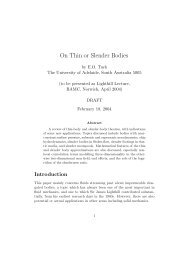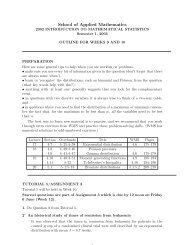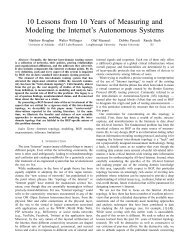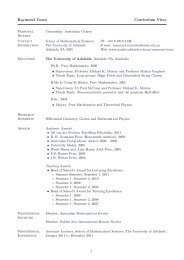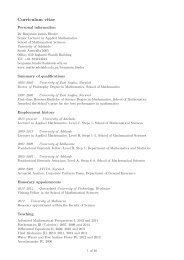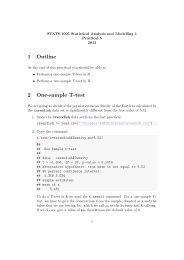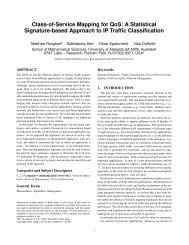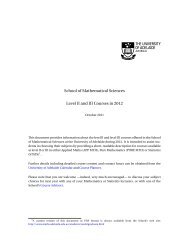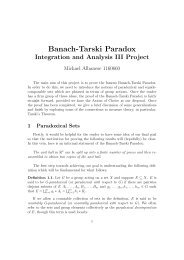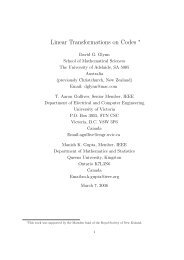PDF of Lecture Notes - School of Mathematical Sciences
PDF of Lecture Notes - School of Mathematical Sciences
PDF of Lecture Notes - School of Mathematical Sciences
You also want an ePaper? Increase the reach of your titles
YUMPU automatically turns print PDFs into web optimized ePapers that Google loves.
2. STATISTICAL INFERENCE<br />
and the alternative hypothesis<br />
H A : θ ∈ Θ A .<br />
The hypothesis testing set up can be represented as:<br />
Test Result<br />
Actual Status<br />
H 0 true H A true<br />
Accept H 0<br />
√<br />
type II<br />
error<br />
(β)<br />
Reject H 0<br />
type I<br />
error<br />
√<br />
(α)<br />
We would like both the type I and type II error rates to be as small as possible.<br />
However, these results conflict with each other. To reduce the type I error rate we<br />
need to “make it harder to reject H 0 ”. To reduce the type II error rate we need to<br />
“make it easier to reject H 0 ”.<br />
The standard (Neyman-Pearson) approach to hypothesis testing is to control the type<br />
I error rate at a “small” value α and then use a test that makes the type II error as<br />
small as possible.<br />
The equivalence between the confidence intervals and hypothesis tests can be formulated<br />
as follows: Recall that a 100(1 − α)% CI for θ is a random interval, (L, U) with<br />
the property<br />
P ((L, U) ∋ θ) = 1 − α.<br />
It is easy to check that the test defined by rule:<br />
“Accept H 0 : θ = θ 0 iff θ 0 ∈ (L, U)” has significance level α.<br />
α = P (reject H 0 |H 0 true)<br />
β = P (retain H 0 |H A true)<br />
1 − β = power = P (reject H 0 |H A true), which is what we want.<br />
Conversely, given a hypothesis test H 0 : θ = θ 0 with significance level α, it can be<br />
proved that the set {θ 0 : H 0 : θ = θ 0 is accepted} is a 100(1 − α)% confidence region<br />
for θ.<br />
Large Sample Tests and Confidence Intervals<br />
Consider a statistical problem with data x 1 , . . . , x n , log-likelihood l(θ; x), score U(θ; x)<br />
and information i(θ).<br />
Consider also a hypothesis H 0 : θ = θ 0 . The following three tests are <strong>of</strong>ten considered:<br />
106





